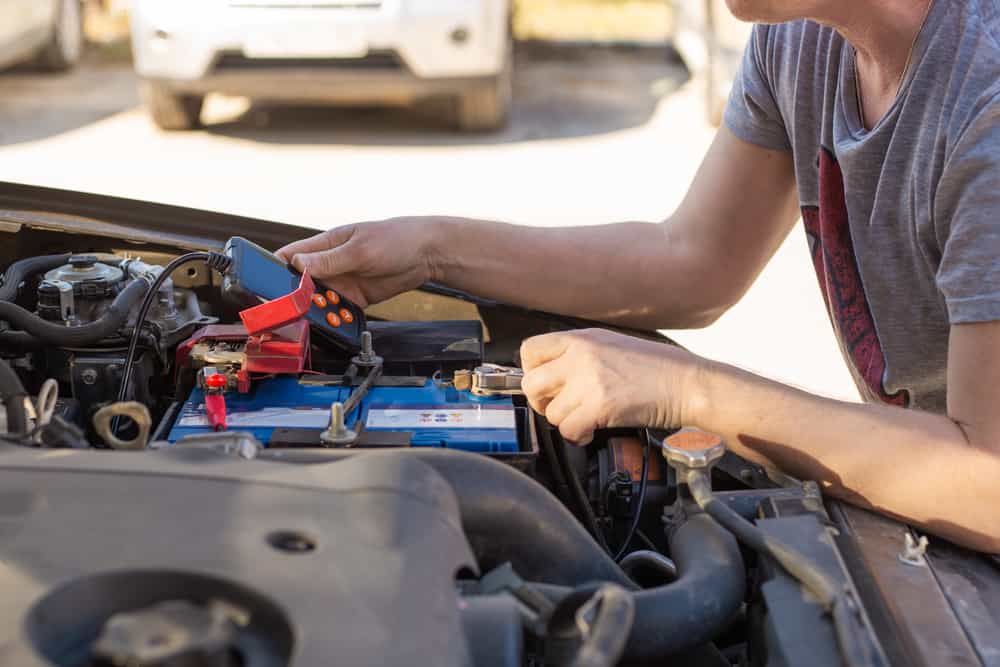Have you ever wondered how many volts it takes to start a car? While the answer may vary depending on the specific vehicle, there are a few key things to keep in mind when trying to start your car’s engine. In this guide, we will walk you through the process of starting your car and provide tips and tricks to help you get on the road quickly and safely.
Understanding the Basics: What You Need to Know
Before we dive into the specifics of how many volts it takes to start a car, it’s important to understand some of the basics of automotive engineering. At its core, a car’s engine is a complex machine that relies on a variety of electrical and mechanical components to function properly.
One of the most important electrical components of a car’s engine is the battery. This device stores energy in the form of chemical reactions and uses it to power the various systems and components of your car. When you turn the key in your car’s ignition, you are essentially completing an electrical circuit that allows the battery to send a current of electricity to the starter motor.
The starter motor is responsible for turning the engine over and getting it ready to run. In order to do this, the starter motor must overcome the resistance of the engine’s various internal components, such as the pistons, valves, and crankshaft. This requires a significant amount of electrical power, which is why your car’s battery must be in good condition and fully charged in order to start your engine reliably.
How Many Volts Does it Take to Start a Car?
So, how many volts does it take to start a car? The answer may surprise you: most car batteries operate at around 12 volts. However, this doesn’t tell the whole story. In reality, the voltage required to start your car’s engine will depend on a variety of factors, including the specific make and model of your vehicle, the condition of your battery, and the temperature outside.
In general, a fully charged car battery should be able to deliver around 12.6 volts of power. However, this voltage will drop as the battery discharges, which means that if your battery is partially or fully drained, it may not be able to deliver the necessary voltage to start your engine.
In addition to the battery, the starter motor itself will require a certain amount of voltage in order to function properly. Most starter motors require between 9 and 15 volts of power to turn the engine over. If your battery is weak or your starter motor is malfunctioning, you may notice that your engine cranks slowly or fails to start at all.
Tips and Tricks for Starting Your Car
Now that you understand some of the basics of how many volts it takes to start a car, let’s take a look at some tips and tricks that can help you get your engine up and running quickly and safely.
Make sure your battery is in good condition.
If your battery is old, weak, or damaged, it may not be able to deliver the necessary voltage to start your engine reliably. Consider having your battery tested or replaced if you notice any signs of weakness, such as slow cranking or dimming headlights.
Keep your engine warm in cold weather
When it’s cold outside, your engine may require more voltage to start up. Consider using an engine block heater or keeping your car in a garage or other sheltered area to help keep your engine warm and make starting easier.
Turn off unnecessary electrical loads
When you turn the key in your car’s ignition, you want to make sure that all available power is being directed to the starter motor. Make sure that your headlights, radio, and other electrical loads are turned off before you attempt to start your engine.
Listen for unusual noises
If you hear grinding or clicking sounds when you turn the key, it could be a sign that your starter motor is malfunctioning. In this case, you may need to have your starter motor replaced by a qualified mechanic.
Check your fuel supply
In some cases, a car may fail to start because it’s out of gas or has a clogged fuel filter. Make sure that your car has enough fuel and check your fuel filter to ensure that it’s clean and free of debris.
Use jumper cables if necessary
If your battery is weak or dead, you may be able to jump-start your car using jumper cables and another vehicle. Make sure to follow the proper safety procedures and instructions when using jumper cables to avoid damaging your car’s electrical system or causing injury.
Frequently Asked Questions
How can I tell if my battery is fully charged?
You can use a multimeter or voltmeter to test the voltage of your battery. A fully charged battery should read around 12.6 volts.
What should I do if my engine cranks but won’t start?
This could be a sign of a variety of issues, including a clogged fuel filter, a malfunctioning spark plug, or a problem with your engine’s computer. Consider having your car inspected by a qualified mechanic to diagnose the problem.
Can a weak battery cause my car to stall while driving?
Yes, a weak battery can cause your car’s electrical system to malfunction, which can lead to stalling or other issues while driving.
Conclusion
In summary, understanding how many volts it takes to start a car is an important part of keeping your vehicle running smoothly and reliably. While the specific voltage required will depend on a variety of factors, including the condition of your battery and the temperature outside, a fully charged car battery should be able to deliver around 12.6 volts of power.
